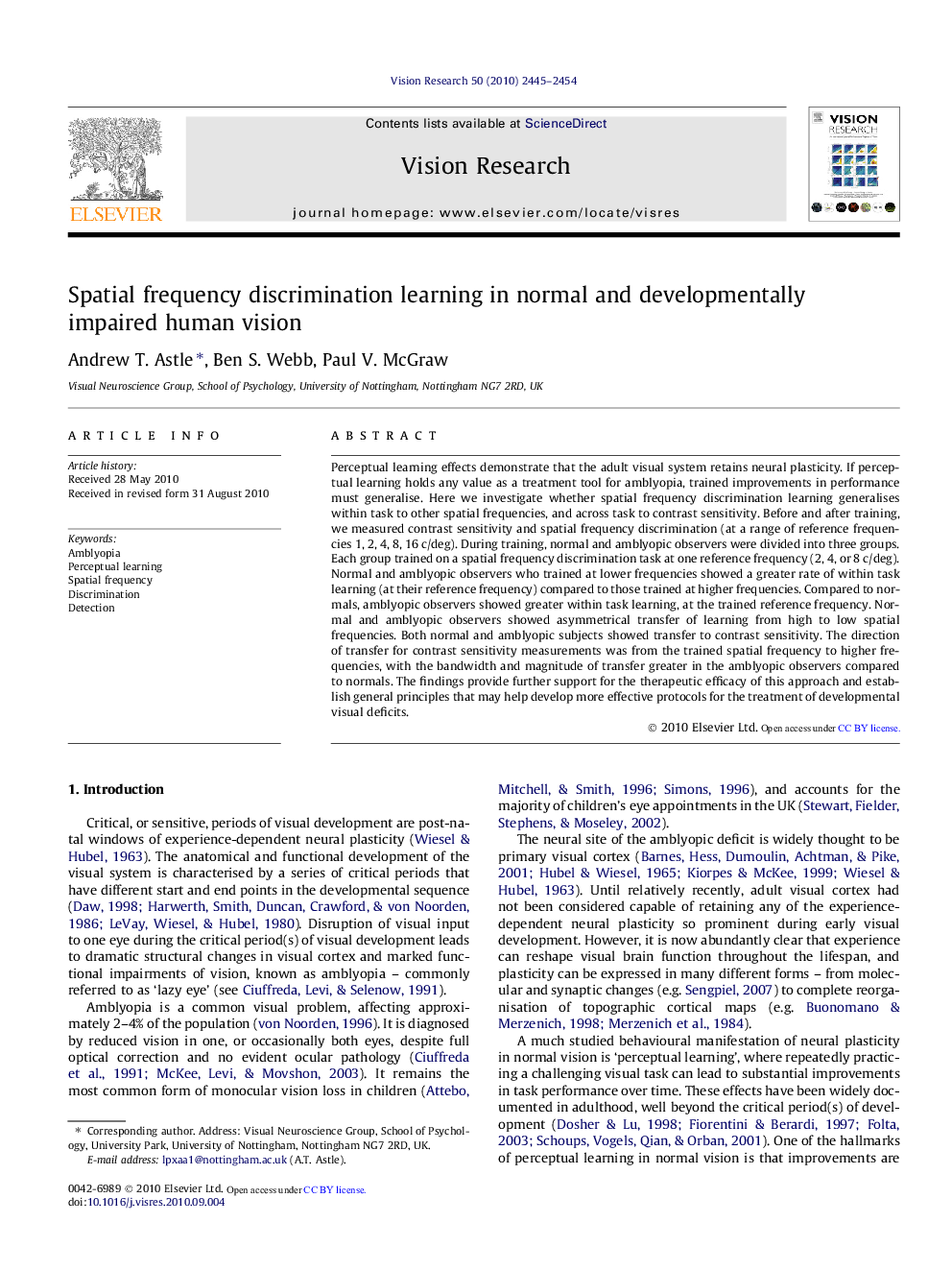| Article ID | Journal | Published Year | Pages | File Type |
|---|---|---|---|---|
| 6203810 | Vision Research | 2010 | 10 Pages |
Perceptual learning effects demonstrate that the adult visual system retains neural plasticity. If perceptual learning holds any value as a treatment tool for amblyopia, trained improvements in performance must generalise. Here we investigate whether spatial frequency discrimination learning generalises within task to other spatial frequencies, and across task to contrast sensitivity. Before and after training, we measured contrast sensitivity and spatial frequency discrimination (at a range of reference frequencies 1, 2, 4, 8, 16Â c/deg). During training, normal and amblyopic observers were divided into three groups. Each group trained on a spatial frequency discrimination task at one reference frequency (2, 4, or 8Â c/deg). Normal and amblyopic observers who trained at lower frequencies showed a greater rate of within task learning (at their reference frequency) compared to those trained at higher frequencies. Compared to normals, amblyopic observers showed greater within task learning, at the trained reference frequency. Normal and amblyopic observers showed asymmetrical transfer of learning from high to low spatial frequencies. Both normal and amblyopic subjects showed transfer to contrast sensitivity. The direction of transfer for contrast sensitivity measurements was from the trained spatial frequency to higher frequencies, with the bandwidth and magnitude of transfer greater in the amblyopic observers compared to normals. The findings provide further support for the therapeutic efficacy of this approach and establish general principles that may help develop more effective protocols for the treatment of developmental visual deficits.
Research highlights⺠Amblyopic observers show greater learning compared to normal observers. ⺠Learning transfers asymmetrically from high to low spatial frequencies. ⺠Spatial frequency discrimination learning transfers to contrast sensitivity. ⺠Principles established may help develop more effective treatment protocols.
